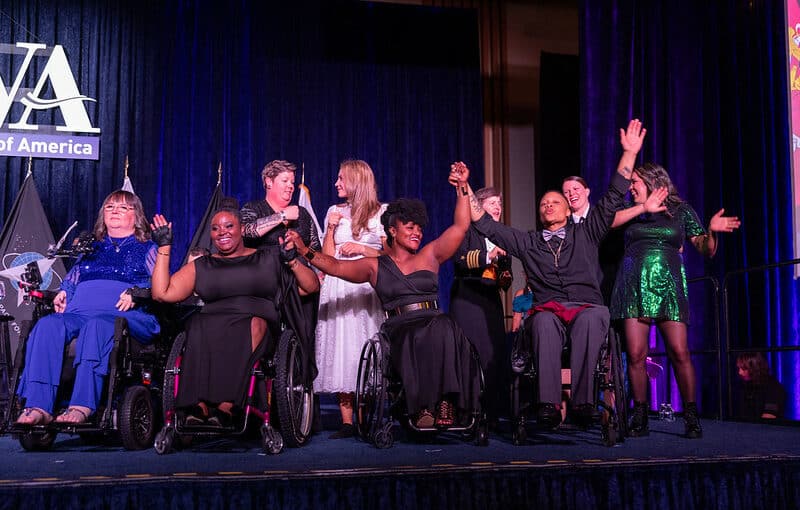There are many different types of spinal cord disease. Living with any one of them can make daily life very challenging at times.
Veterans who are living with a spinal cord disease can take advantage of ongoing support and helpful resources and benefits through Paralyzed Veterans of America membership. With knowledge and information, you and your doctor can make the right choices about managing your condition.
For more information and help with understanding and selecting treatment options, please contact us.
MULTIPLE SCLEROSIS
Multiple Sclerosis (MS) is a disease of the central nervous system and the most common neurological disorder in young adults. MS is a chronic condition that is often disabling, but not fatal. Most people with MS live full, productive lives. Read more.
AMYOTROPHIC LATERAL SCLEROSIS
Amyotrophic Lateral Sclerosis (ALS or Lou Gehrig’s disease) weakens and eventually destroys the body’s motor neurons, making functions such as walking and talking very difficult. Read more
LUPUS
Lupus is a chronic disease that causes swelling in different parts of the body. The different symptoms of Lupus — such as arthritis, anemia and fever — make the disorder very hard to diagnose.
It is believed that certain types of infections, some antibiotics, continued and ongoing exposure to ultraviolet light, and extreme stress may cause lupus. Women tend to develop the disorder at a much higher rate than men.
Although lupus can become life-threatening when major organs are affected, modern medical treatments have made lupus easier to live with. Medication, exercise, relaxation and diet can all make the disease more manageable. Read More
SPINA BIFIDA
Spina bifida occurs in babies during pregnancy when the spinal column does not close completely, the way it is supposed to. This can lead to fluid on the brain, motor and sensory impairment, incontinence, learning disabilities, and depression.
Veterans who may have been exposed to Agent Orange are more likely to have children with spina bifida. These children are eligible for benefits under the Agent Orange Benefits Act.
Although there is no known cure, many people born with Spina Bifida can expect to live normal and healthy lives. Read More
SPINAL STENOSIS
Spinal stenosis occurs when an overgrowth of bone or tissue decreases the amount of space between the spinal bones, affecting the nerve roots. Symptoms range from numb legs and feet or paralysis when the upper spinal region or neck is affected.
Spinal stenosis can be diagnosed through X-rays, magnetic resonance imaging (MRI), computed tomography (CT) scans and blood tests. It can be treated through physical therapy, medication or, in severe cases, surgery to relieve pressure on nerves.
SYRINGOMYELIA
Syringomyelia (SM) is a chronic spinal cord disorder that forms before birth or as a result of an accident, tumor or disease. The condition causes fluid to flow into the spinal cord, causing a cyst that grows and damages nerve fibers. Initial symptoms include headache, muscle weakness and loss of sensitivity to heat and cold, particularly within the hands. Abnormal spine growth and bone deterioration may cause scoliosis and osteoporosis. Advanced SM can cause paralysis or quadriplegia. Surgery can halt cystic growth and alleviate symptoms and cysts can be drained to relieve pressure on the spinal cord.
TRANSVERSE MYELITIS
Transverse myelitis is a group of disorders associated with spinal cord swelling. It usually occurs along with a neural injury and can cause infection in less than a day. Symptoms include muscle and back pain and leg weakness.
Though full recovery is possible, many of those infected are left with permanent damage, such as paralysis. Read More
MORE INFORMATION
Recent News
View All



